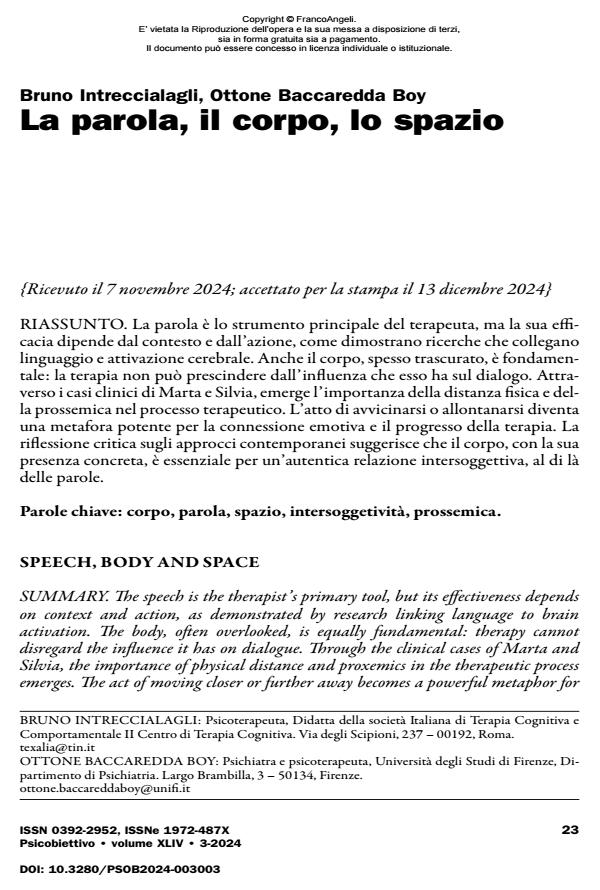Speech, body and space
Journal title PSICOBIETTIVO
Author/s Bruno Intreccialagli, Ottone Baccaredda Boy
Publishing Year 2025 Issue 2024/3
Language Italian Pages 10 P. 23-32 File size 145 KB
DOI 10.3280/PSOB2024-003003
DOI is like a bar code for intellectual property: to have more infomation
click here
Below, you can see the article first page
If you want to buy this article in PDF format, you can do it, following the instructions to buy download credits

FrancoAngeli is member of Publishers International Linking Association, Inc (PILA), a not-for-profit association which run the CrossRef service enabling links to and from online scholarly content.
The speech is the therapist’s primary tool, but its effectiveness depends on context and action, as demonstrated by research linking language to brain activation. The body, often overlooked, is equally fundamental: therapy cannot disregard the influence it has on dialogue. Through the clinical cases of Marta and Silvia, the importance of physical distance and proxemics in the therapeutic process emerges. The act of moving closer or further away becomes a powerful metaphor for emotional connection and therapeutic progress. A critical reflection on contemporary approaches suggests that the body, with its tangible presence, is essential for an authentic intersubjective relationship that goes beyond words.
Keywords: corpo, parola, spazio, intersoggetività, prossemica.
Bruno Intreccialagli, Ottone Baccaredda Boy, La parola, il corpo, lo spazio in "PSICOBIETTIVO" 3/2024, pp 23-32, DOI: 10.3280/PSOB2024-003003